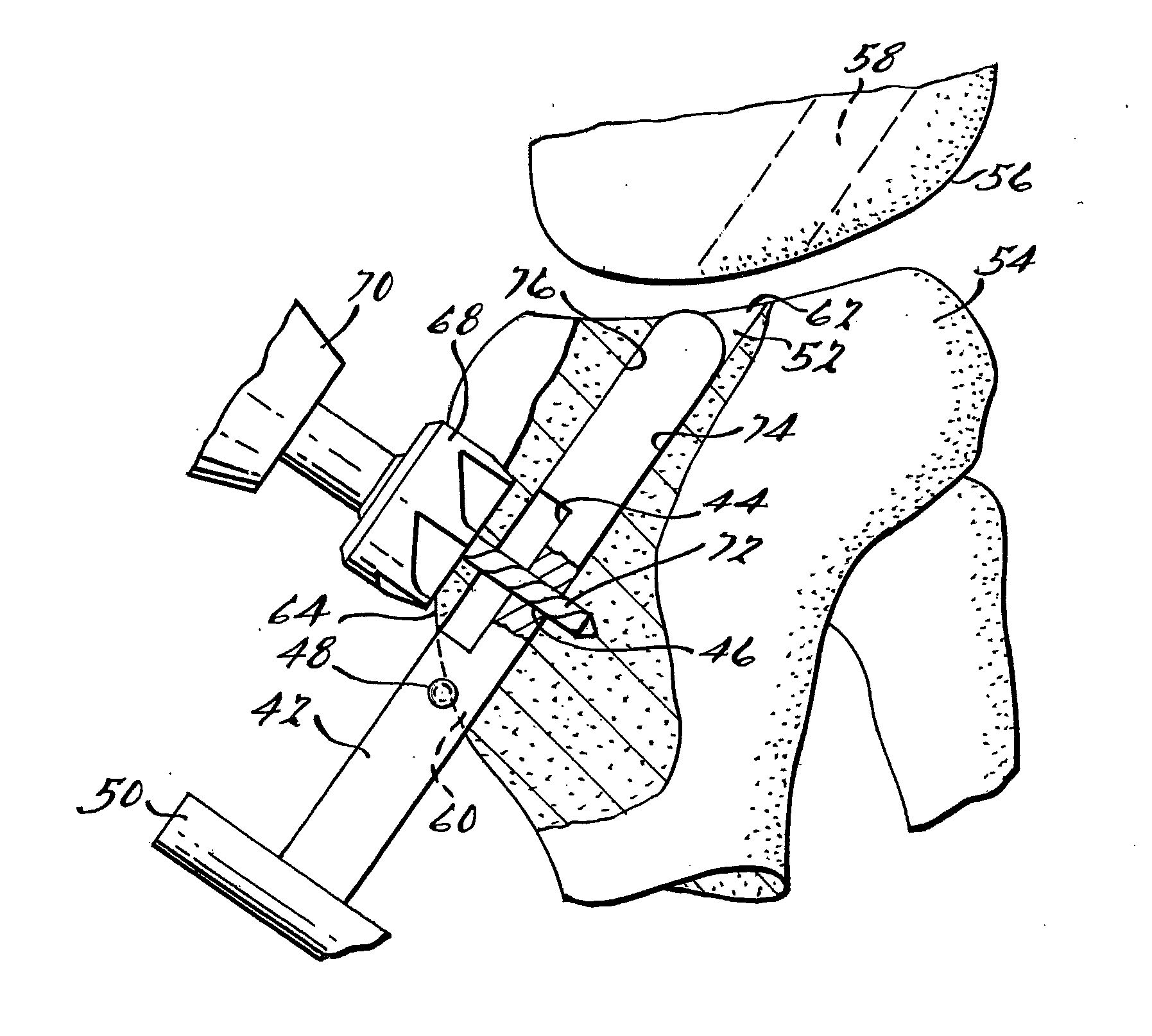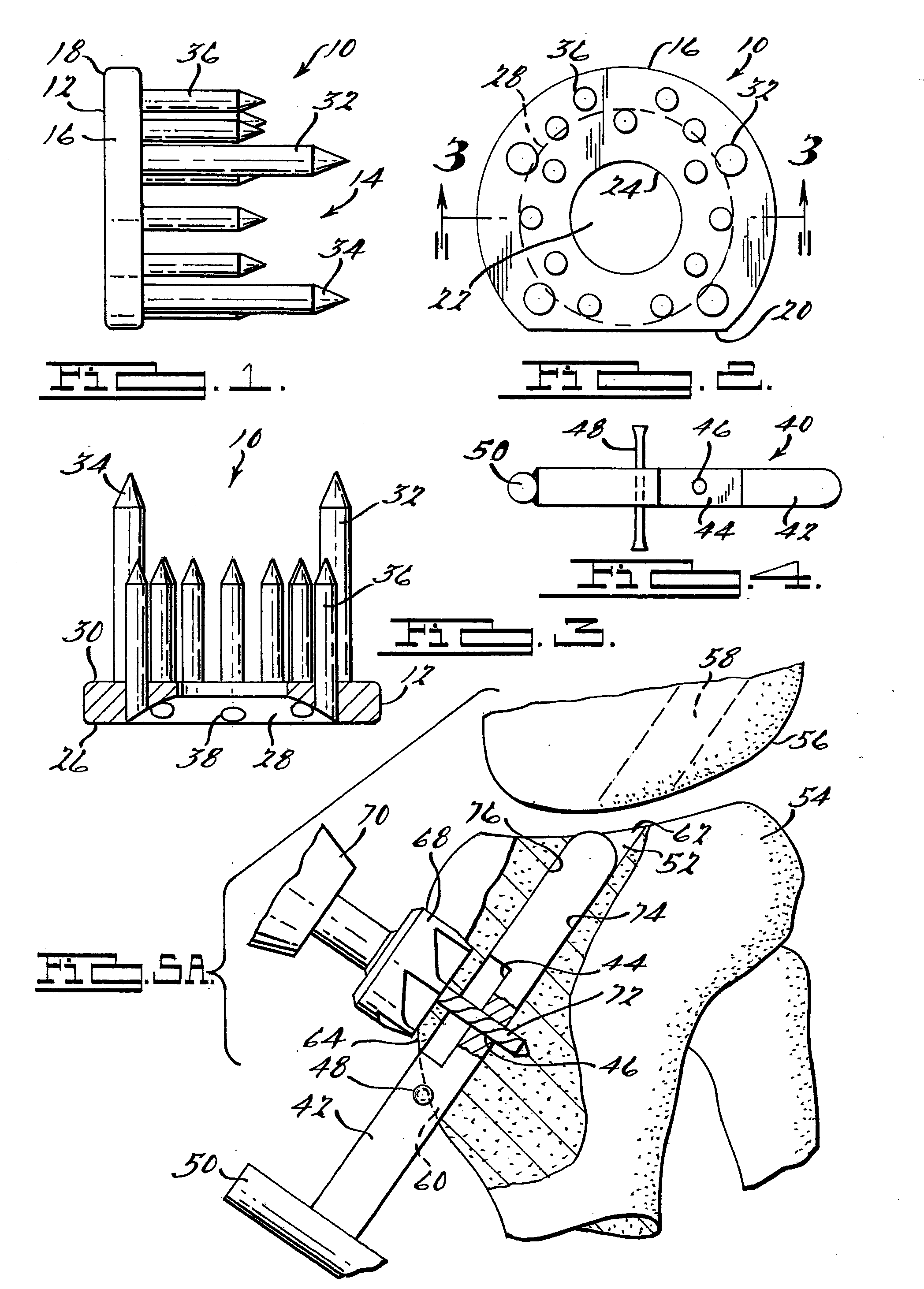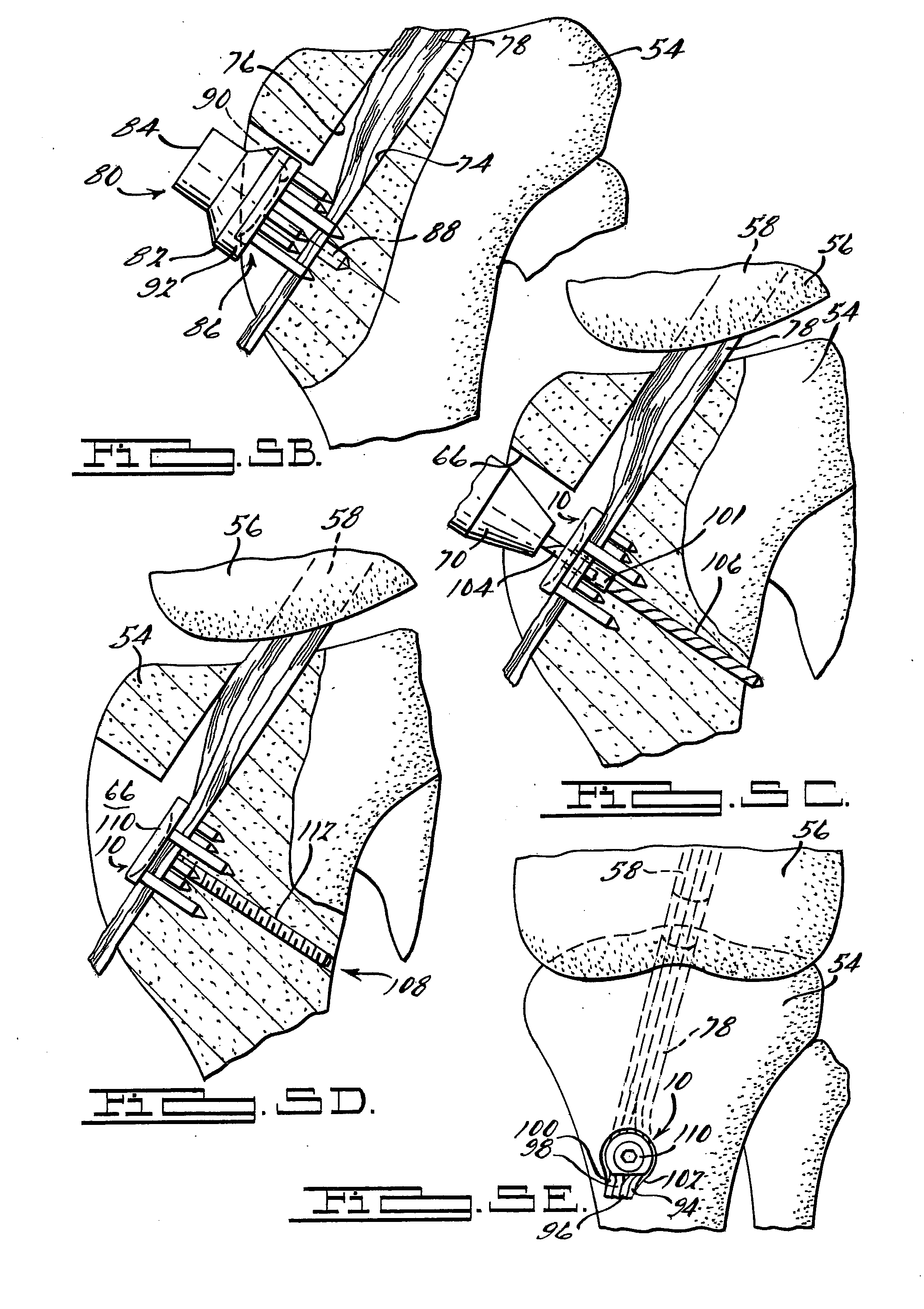Apparatus and Method for Tibial Fixation of Soft Tissue
a technology of soft tissue and appendix, which is applied in the direction of surgical staples, prostheses, ligaments, etc., can solve the problems of degenerative arthritis, grafts may be cut or frayed inadvertently, and the physical activity is generally more susceptible to such ligament injuries
- Summary
- Abstract
- Description
- Claims
- Application Information
AI Technical Summary
Benefits of technology
Problems solved by technology
Method used
Image
Examples
Embodiment Construction
[0050] The following description of various embodiments concerning an apparatus and method for tibial fixation of soft tissue grafts are merely exemplary in nature and are in no way intended to limit the invention or its application or uses. Moreover, while the present invention is described in detail below with reference to tibial fixation of soft tissue grafts through a tibial tunnel, it will be appreciated by those skilled in the art that the present invention is clearly not limited to fixation in a tibial tunnel and may be utilized to secure soft tissue grafts, tendons, ligaments, etc. in various other tunnels, bores or adjacent to a bone.
[0051] Referring to FIGS. 1-3, an apparatus 10 for tibial fixation of a soft tissue graft according to the teachings of one embodiment of the present invention is shown. The apparatus or washer 10 includes a cylindrical body 12 having a diameter of about 16 millimeters and a plurality of spikes 14. The cylindrical body 12 includes a substantia...
PUM
 Login to View More
Login to View More Abstract
Description
Claims
Application Information
 Login to View More
Login to View More - R&D
- Intellectual Property
- Life Sciences
- Materials
- Tech Scout
- Unparalleled Data Quality
- Higher Quality Content
- 60% Fewer Hallucinations
Browse by: Latest US Patents, China's latest patents, Technical Efficacy Thesaurus, Application Domain, Technology Topic, Popular Technical Reports.
© 2025 PatSnap. All rights reserved.Legal|Privacy policy|Modern Slavery Act Transparency Statement|Sitemap|About US| Contact US: help@patsnap.com



